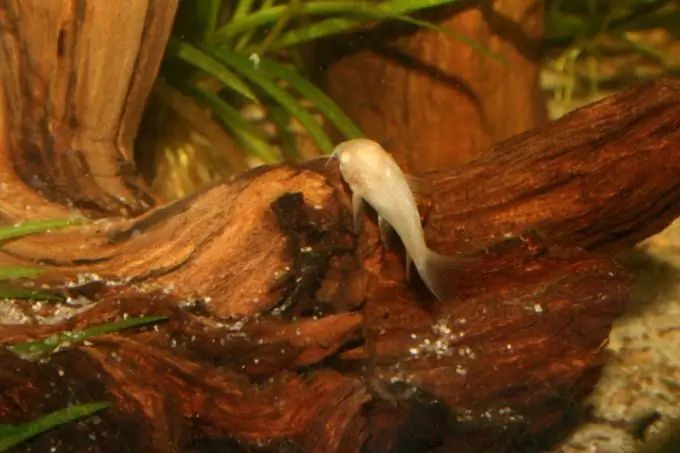Driftwood is one of the most important elements of any aquarium, both home and exhibition. The small aquatic world where there is a driftwood acquires not only the appearance of a natural aquatic environment, but also emphasizes the beauty of the aquarium inhabitants. Some species of fish find refuge under driftwood, while driftwood serves as food for other fish. Driftwood is also used as a spawning substrate.

It is necessary
- Wood
- Enamel cookware
- Water
- Salt
Instructions
Step 1
It is best to look for a blank for a bark beetle in local waters. If you want to keep your inhabitants in good health, make sure that this reservoir is necessarily environmentally friendly; there should be no enterprises with industrial and agricultural waste in its zone. After the reservoir is found, you need to find the snag you like. You just need to take into account the size of the aquarium and the driftwood itself, it will have to be boiled for some time.
Step 2
So, a suitable driftwood has been found, and it needs to be examined. A good driftwood has a fairly hard wood, there is no putrefactive smell from it, it is not covered with mold. After this check, you can proceed to its further preparation.
Step 3
The driftwood needs to be washed and barked off. If desired, the snag can be given a certain shape.
Step 4
After that, the snag must be treated from a biological point of view. To do this, the snag must be "baked". You need to put the piece of driftwood in the oven, heat it up to 200 degrees and leave the driftwood there for 2-5 hours. From time to time, the snag will need to be turned over for even coloring. This process removes moisture from the wood and prevents the driftwood from rotting.
Step 5
Then the snag must be tied to the load and placed in an enamel container, filled with strong saline solution and boiled for about 12 hours. To be absolutely sure in the sterilization of driftwood, potassium permanganate can also be added to the solution at the rate of 5-10 grams per 10 liters. Potassium permanganate, in addition to disinfection, will also give the driftwood a more saturated color.
Step 6
The last step is to free the driftwood from salt and manganese. To do this, the snag must be boiled in fresh water, changing it every three hours. This should be repeated from 2 days to 2 weeks, depending on the size and number of blanks. After these operations, the driftwood will be absolutely ready to enter the aquarium and delight you and the inhabitants of the aquarium for many years.






